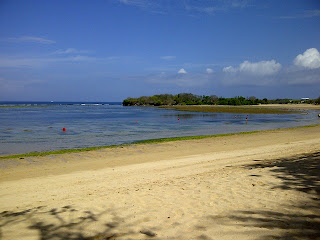Catch a Falling (sea) Star

Catch a falling star and put it in your pocket Never let it fade away… Catch a falling star and put it in your pocket Save it for a rainy day … Familiar with this song? Imagine catching a falling star and having it as your lucky charm. :-) So I had a chance to catch some falling "stars". Nusa Dua Beach was full of them and I felt like I was in a Giant Touch Pool at the sea world. The two common species of sea stars that I found in Nusa Dua are the Horned Sea Star or also known as the Knobbly Sea Star (Protoreaster nodosus) and the Pentaceraster mammilatus. They come in various bright colors and shape. Some have horned or spiky feature, however, despite their scary-look, sea stars are safe to touch with the exception of the poisonous crown of thorn sea star(Acanthaster planci). The features of sea stars are pentaradial symmetry and most of them have five arms that radiate from the central disk. Several species, such as the sunflower...



